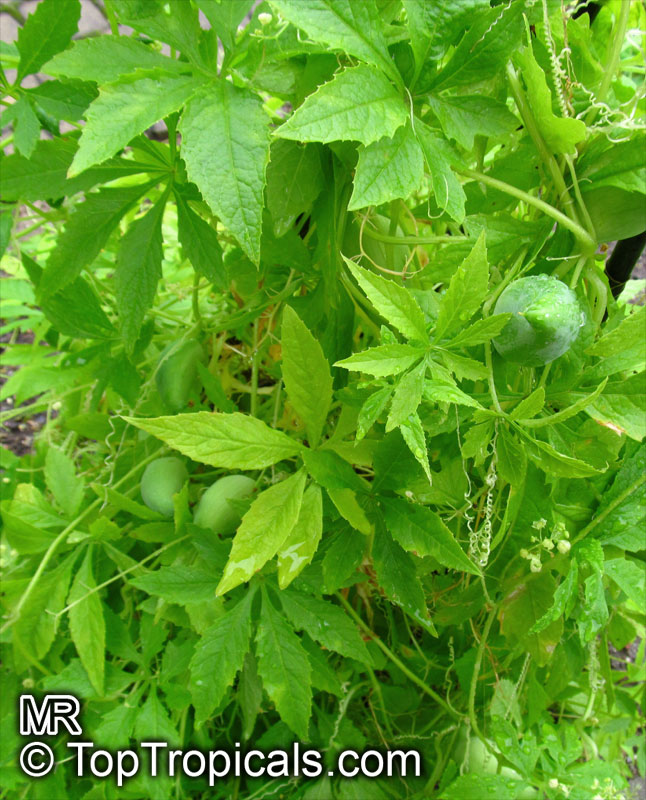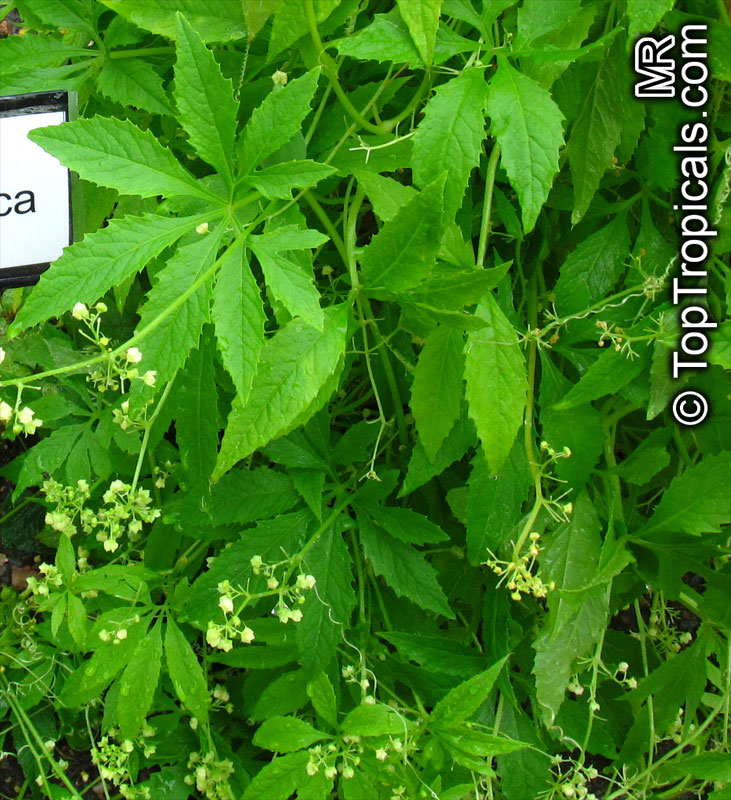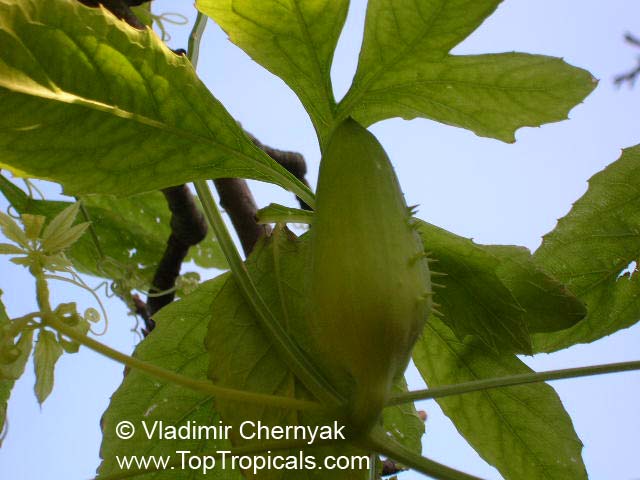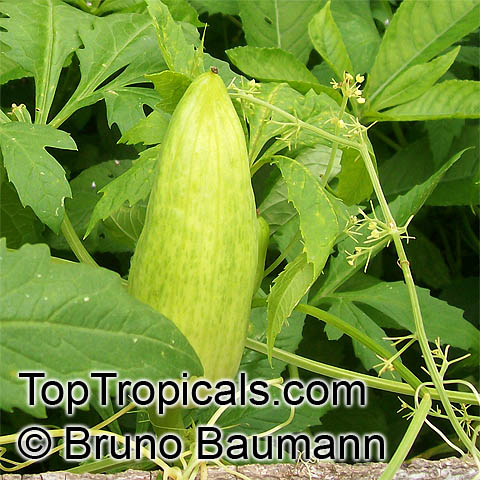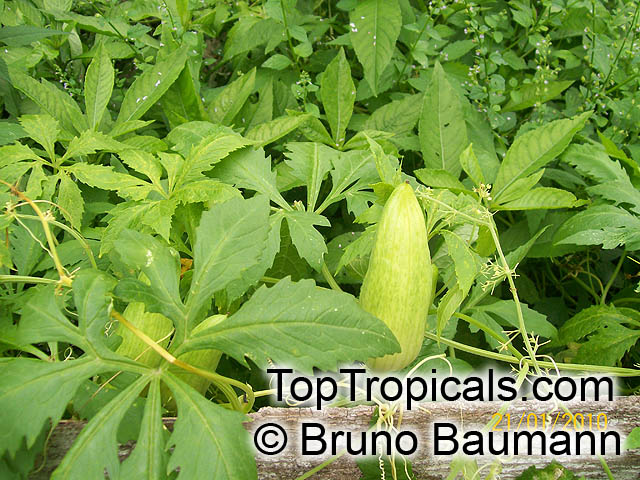Cyclanthera pedata (Caigua)
Top Tropicals Plant Encyclopedia
Botanical names: Cyclanthera pedata, Momordica pedata
Common names: Caigua, Wild Cucumber, Stuffing Cucumber
Family: Cucurbitaceae
Origin: South America









Cyclanthera pedata (Caigua) is a fast-growing vine or creeper that is native to South America. It thrives in full sun, with semi-shade in warmer climates. It can tolerate regular, moderate water and is an ethnomedical plant, used for many ailments. The Caigua produces white to off-white flowers, followed by small fruits. It is a versatile plant, with the leaves, flowers, young fruits and young shoots all edible; the mature fruit can be used in a dish similar to stuffed peppers.
This plant grows best in USDA Zone 6-10 and is fairly cold hardy, able to withstand temperatures at least to 30s F for a short period of time. When grown in a pot, it may need some protection from cold weather or frost. It can be grown in colder regions as an annual and is often seen in markets in Peru and Ecuador. If grown in a climate that suits it, the large mature fruits may produce up to 15 fruits per plant.
The fruit of the Caigua is rich in vitamins A, E and C and is also full of antioxidants and proteins. It can be eaten raw, pickled, boiled, or fried, and is often added to salads and sauces. It can also be used as a side dish, similar to a stuffed pepper, with ingredients like meat, fish, or cheese. Additionally, it is featured in popular Andean dishes, such as locro, a dish made using maize, pork, and caigua.
Overall, the Cyclanthera pedata is a versatile and healthy plant native to South America, with many nutritional benefits. Easily grown in warmer climates, the fruit of the caigua can be eaten in different ways, making it an interesting addition to any garden.
